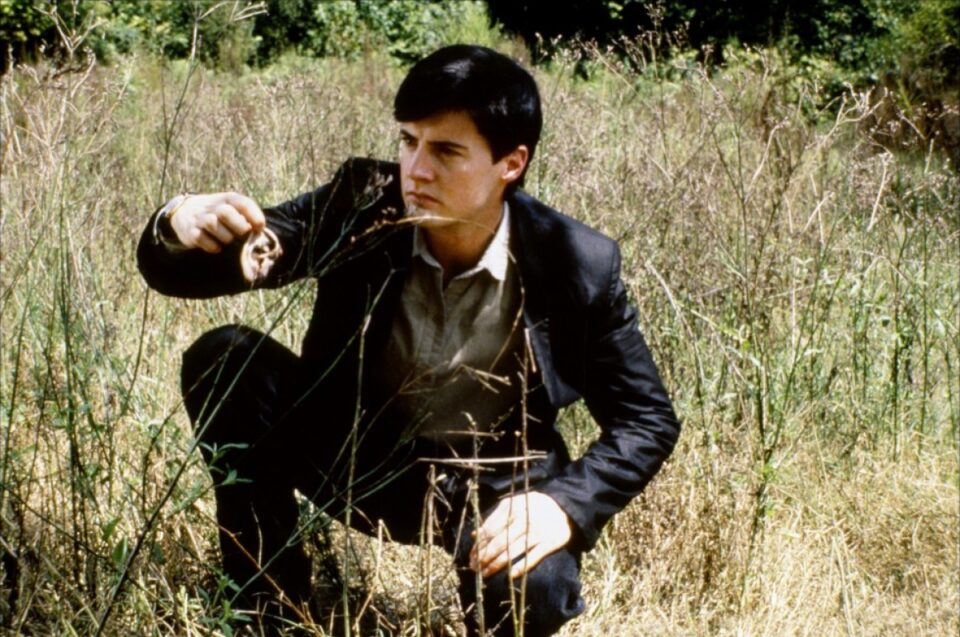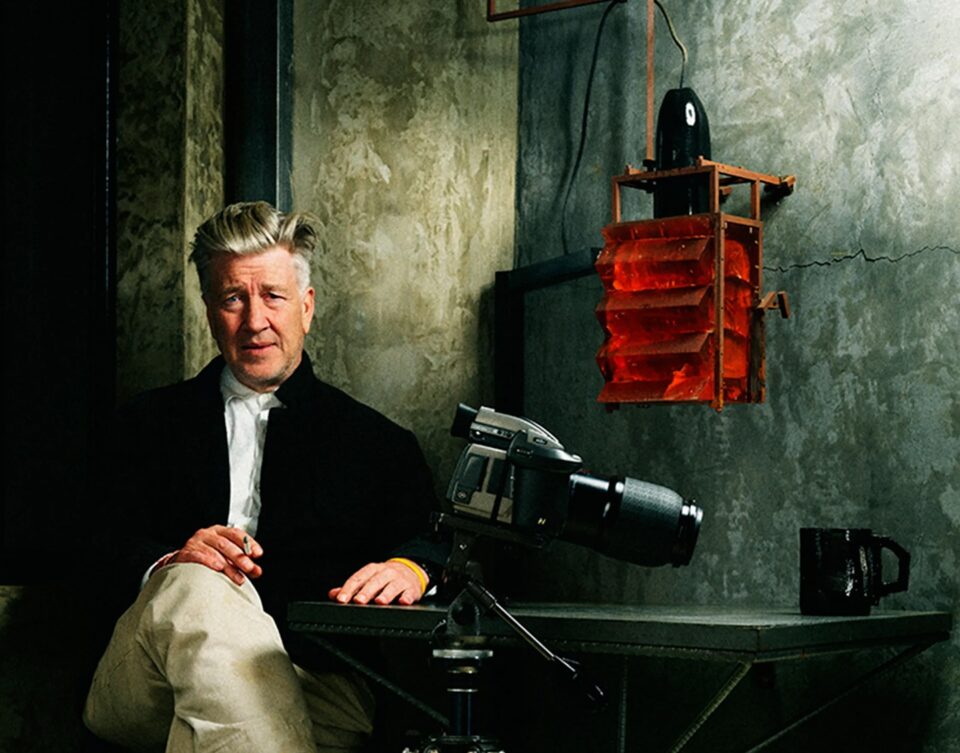David Lynch: Through the Darkness of Future Past
Remembering the maverick filmmaker who weaved dreams into reality
David Lynch was a man who wore many, many hats; artist, filmmaker, musician, weather man to name a few, and they all fit. A smoker from age eight, as he puts it, Lynch quit that habit in 2022 after being diagnosed with emphysema, relying on supplemental oxygen sources to keep on going. On Jan. 16, 2025, David Lynch passed away at the age of 78. Keeping true to his belief, “Keep your eye on the doughnut, not on the hole” — here’s to the man who liked to get lost in another world.
Any work by Lynch has a very distinct feeling of wandering through a restless dream. The magic of a heavy fog blankets you as helplessly watch the surreal events play out on screen. Be it a boy discovering a severed human ear in the grass on a bright sunny day or a cooked chicken writhing on a plate just as a man begins cutting into it for dinner.
“Waking dreams are the ones that are important, the ones that come when I’m quietly sitting in a chair, letting my mind wander. When you sleep, you don’t control your dream. I like to dive into a dream world that I’ve made or discovered; a world where I choose…right there is the power of cinema.” That was David Lynch for you.
Lynch also drew a lot of inspiration from dreams and transported them to reality. The Alphabet (1968) is an early unsettling short film he made based on a dream that Peggy Lentz’s (his wife at the time) niece. Painting the ceiling of the room black and Peggy’s face white, set to the eerie chanting of the ABCs, he brought a little girl’s dream to the waking world in a truly nightmarish fashion.
In Twin Peaks: The Return there’s a line where Monica Bellucci (who plays herself) says a phrase that encapsulates the feeling perfectly: “We are like the dreamer, who dreams and then lives inside the dream, but who is the dreamer?”
Lynch later elaborated, “We live inside a dream. And one day we wake up and realize that it was a dream, and we realize who we truly are. It’s a glorious day when that happens.”

The theme of dreaming, the subconsciousness that creates vivid imagery is one of the many refrains in Lynch’s works. With his signature use of lighting, color and sound, it is hard to tell where exactly Lynch’s dream ends and the viewer’s begins.
Originally a painter, it was only when he was struck with the idea that he wanted to see his paintings move, he ventured into the world of moving pictures. His first film is in fact an animated short Six Men Getting Sick (Six Times) (1967) set to the background sound of sirens wailing.
By his own admission in Lynch on Lynch (1993), “All my paintings are organic, violent comedies. They have to be violently done and primitive and crude, and to achieve that I try to let nature paint more than I paint…. Color to me is too real. It’s limiting. It doesn’t allow too much of a dream. The more you throw black into a color, the more dreamy it gets … Black has depth. It’s like a little egress; you can go into it, and because it keeps on continuing to be dark, the mind kicks in, and a lot of things that are going on in there become manifest. And you start seeing what you’re afraid of. You start seeing what you love, and it becomes like a dream.”
Whatever be the medium, Lynch’s distinct touch is evident in all he creates.
He said, “Films start with a fragment, a piece of the puzzle. The puzzle exists in the other room. I get hold of one piece, and I love it so much that it attracts other pieces to come in and join it. And pretty soon, the puzzle is in my room. I certainly don’t know what the film is about until further down the line.”
Eraserhead (1977) was Lynch’s first feature-length film. Quite like his paintings, the color palette here was a stark black and white with muted shades of gray.
“Well, you know, because it was dark! And the park department was up there during the day, so it was noisy and there were people around. At night, no one was there. And it was a nighttime film. The mood was perfect, and that is critical,” he explained.
Shot entirely at night, this surreal horror film was a hit in the midnight movie circuit. To this day, it remains a mystery as to how or what exactly is the nature of the prop that functions as the infant in the film. Along with the bizarre visuals and props, the sound design is what really makes Eraserhead stand out. The constant undercurrent of sound that plays throughout the film almost creates the presence of another character entirely.
He said, “I’m real fascinated by presences—what you call ‘room tone.’ It’s the sound that you hear when there’s silence, in between words or sentences. It’s a tricky thing, because in this seemingly kind of quiet sound, some feelings can be brought in, and a certain kind of picture of a bigger world can be made. And all those things are important to make that world.”

The alien nature of something entirely mechanical that comes along with industrialization was ubiquitous in Lynch’s work; from the Packard Sawmill in Twin Peaks to the industrial cityscape in Eraserhead; “The clunk of machinery, the power of pistons, shadows of oil drills pumping, screaming wood mills, and smoke-billowing factories.”
“It makes me feel good to see giant machinery, you know, working, dealing with molten metal. And I like fire and smoke. And the sounds are so powerful. It’s just big stuff. It means that things are being made, and I really like that,” Lynch said.
Not many can claim that their individual style could be so distinct as to have an adjective coined just for it. ‘Lynchian’, a term coined by David Foster Wallace perfectly encapsulates the marriage of the mundane and the macabre, the magic that Lynch creates.
“I make things that are troublesome. That’s because my ideas come from our world, and our world has such negativity and absurdities.”
With notable exceptions like Dune (1984), Lynch set his films in American Suburbia soaked with an unsettling undercurrent of inexplicable malice.
He says, “I guess I feel the atmosphere of a place, the mood of a place and it affects me and I just felt like I was living inside an ocean of fear and I would see so many things that supported that and I guess this makes a network in a person’s psyche and when you do get ideas they come bobbing up through this network and are altered somewhat and out comes Eraserhead or Blue Velvet.”
“I love absurdities. I fall in love with ideas for two reasons; firstly, for the idea itself and secondly for what cinema could do to it. In the old days, I had plenty of ideas, but there was hollowness in the happiness department and many worries. Negativity restricts the flow of creativity, and suffering is not the friend of creativity.”
The dreamlike nature of his films is just that, dreams. It is difficult to capture their ‘meaning’ and put it down as something tangible.
“I don’t know why people expect art to make sense. They accept the fact that life doesn’t make sense.”
Between the recurring technique of having his female leads play dual roles on screen and having characters that embody the physical manifestation of abstract concepts, the surreal experimental tone often causes one to question reality while watching his films. For every watch, every viewer has a unique experience.
“Well, imagine if you did find a book of riddles, and you could start unravelling them, but they were really complicated. Mysteries would be apparent and thrill you. We all find this book of riddles and it’s just what’s going on. And you can figure them out. The problem is, you figure them out inside yourself, and even if you told somebody, they wouldn’t believe you or understand it in the same way you do.”
Lynch did not solely stick to the visual mediums, he was also a musician with an extensive discography; three studio albums, two collaborative studio albums, six soundtrack albums, two spoken-word albums, 20 singles, six music videos and one EP.
“I was just sitting and these notes came and then I went down and started working with Dean (Hurley, musician and sound engineer) and then these few notes, ‘I want to have a good day, today’ [from his song ‘Good Day Today’] came and the song was built around that.”
Like his films, his music also has a dark avant-garde industrial undertone which plays moodily like the sounds of a half-remembered yet, long-forgotten dream. His first foray into the musical medium began with Eraserhead and its soundtrack where he co-wrote the iconic In Heaven (Lady in the Radiator Song).
“Films and furniture are based on ideas. You get an idea. And then you’re hooked.”
He brought the bizarre stuff of dreams into reality as material objects, notably furniture. He initially started designing furniture to feature in Eraserhead and from there it evolved into a full-blown side project. His designs are simple and minimalist yet evoke the same feeling of surreal experimentalism.

“Silencio is something dear to me. I wanted to create an intimate space where all the arts could come together.”
He designed Silencio, a club in Paris whose namesake is the club in his film Mulholland Drive (2001). While it is an exclusive, members-only club, past the stroke of midnight anyone is free to get in (provided you don’t mind the long wait time). Walking through the doors of Silencio is the closest thing to stepping on the dreams Lynch materializes into the waking world.
“Even a bad cup of coffee is better than no coffee at all.”
With the sight, sound and touch covered, the only two senses left are that of smell and taste, both of which Lynch dabbled in via his David Lynch Signature Cup Coffee line which, unfortunately, is no longer available. But at one point even the viewer could experience the diner coffee drunk by Agent Dale Cooper in Twin Peaks, which according to Lynch would be the David Lynch Signature Cup Coffee House Roast.

Despite creating such dark tales, Lynch was not a morose individual and was a practitioner and advocate of Transcendental Meditation (TM).
“The whole purpose of understanding unity is to expand happiness, which is not a bad thing. Transcendental meditation will get you to that field of unity, that state of infinite consciousness. Consciousness is tied in with intelligence, creativity, happiness, love, energy, power, peace… all positive things. That’s why I want to talk about them.”
Be it films, paintings, furniture, coffee or music, Lynch carved a distinct space for his craft and successfully created dreams in the waking world. Now, that thread of dreaming has been cut. But like Lynch said, “Death in my mind isn’t a finality. There’s a continuum: It’s like at night, you go to sleep and in the daytime, you wake up, or whenever you wake up, and it’s a new day.”








